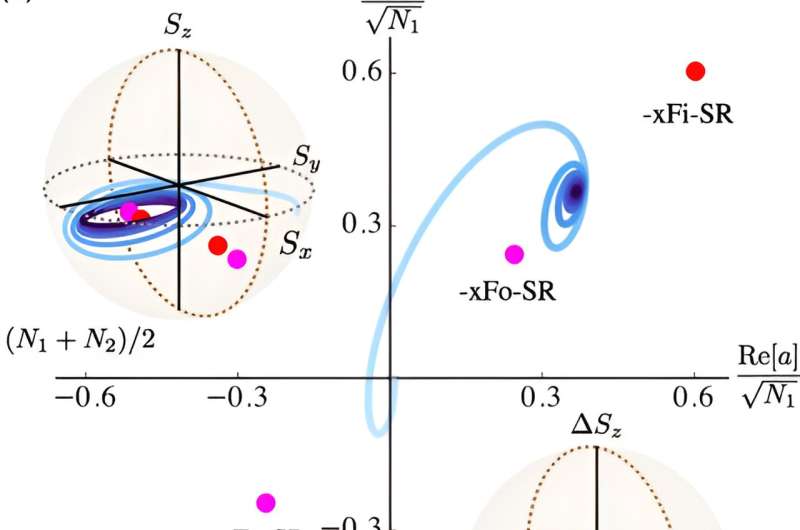This article has been reviewed according to Science X's editorial process and policies. Editors have highlighted the following attributes while ensuring the content's credibility:
fact-checked
trusted source
proofread
Physicist's model and predictions may have applications in the new generation of superradiant lasers

Theoretical physicist Farokh Mivehvar has investigated the interaction of two collections of atoms emitting light inside a quantum cavity—an optical device consisting of two high-quality, tiny mirrors facing each other that confine the light within a small area for an extended time. The model and predictions can be implemented and observed in state-of-the-art cavity/waveguide-quantum-electrodynamics experiments and might have applications in the new generation of so-called superradiant lasers.
Superradiance is one of the most surprising and striking phenomena in quantum optics. However, it can be intuitively understood by imagining an atom as a tiny antenna that can emit light (or more technically, electromagnetic radiation) under appropriate conditions.
"Now imagine that there is a collection of N atoms. When these N atoms are located far from one another and thermally excited, they radiate independently from each other so that the intensity of the emitted light is proportional to the number of the atoms, N," explains Farokh Mivehvar from the Department of Theoretical Physics of the University of Innsbruck.
However, if these atoms are located very closely, the atomic antennae start talking to each other and consequently synchronize with one another, hence emitting light whose intensity goes as the square of the number of the atoms.
"One can envisage this situation as the atoms forming a single giant antenna which emits light more efficiently," Farokh Mivehvar says. "As a result, the atoms emit their energy N times faster than independent atoms." It is this effect which is referred to as superradiance.
On the way to superradiant lasers
In his recent work, published in Physical Review Letters, Farokh Mivehvar has theoretically considered two collections of atoms, each containing a number of atoms (N1 and N2), inside a quantum cavity. In each ensemble, the atoms are located very closely to each other and can emit light superradiantly.
"However, it is not obvious a priori how these two giant antennae associated with the two atomic ensembles can emit light simultaneously," says Mivehvar. This turns out to be nontrivial. "In particular, we find two distinct ways that the two giant antennae can emit light."
In the first way, the two giant antennae cooperate with each other and form a single super-giant antenna, emitting light superradiantly even more so. However, in the second way, the two giant antennae compete with each other destructively, hence suppressing the superradiant light emission.
In particular, when the two ensembles have the same number of atoms, the superradiant light emission is completely suppressed. "In addition, we also find cases where the two giant antennae emit light which is a superposition of the two types mentioned before and has an oscillatory character," says Farokh Mivehvar.
The model and predictions can be implemented and observed in state-of-the-art cavity/waveguide-quantum-electrodynamics experiments. The findings might also have applications in the new generation of so-called superradiant lasers.
More information: Farokh Mivehvar, Conventional and Unconventional Dicke Models: Multistabilities and Nonequilibrium Dynamics, Physical Review Letters (2024). DOI: 10.1103/PhysRevLett.132.073602. On arXiv: DOI: 10.48550/arxiv.2307.05686
Provided by University of Innsbruck




















